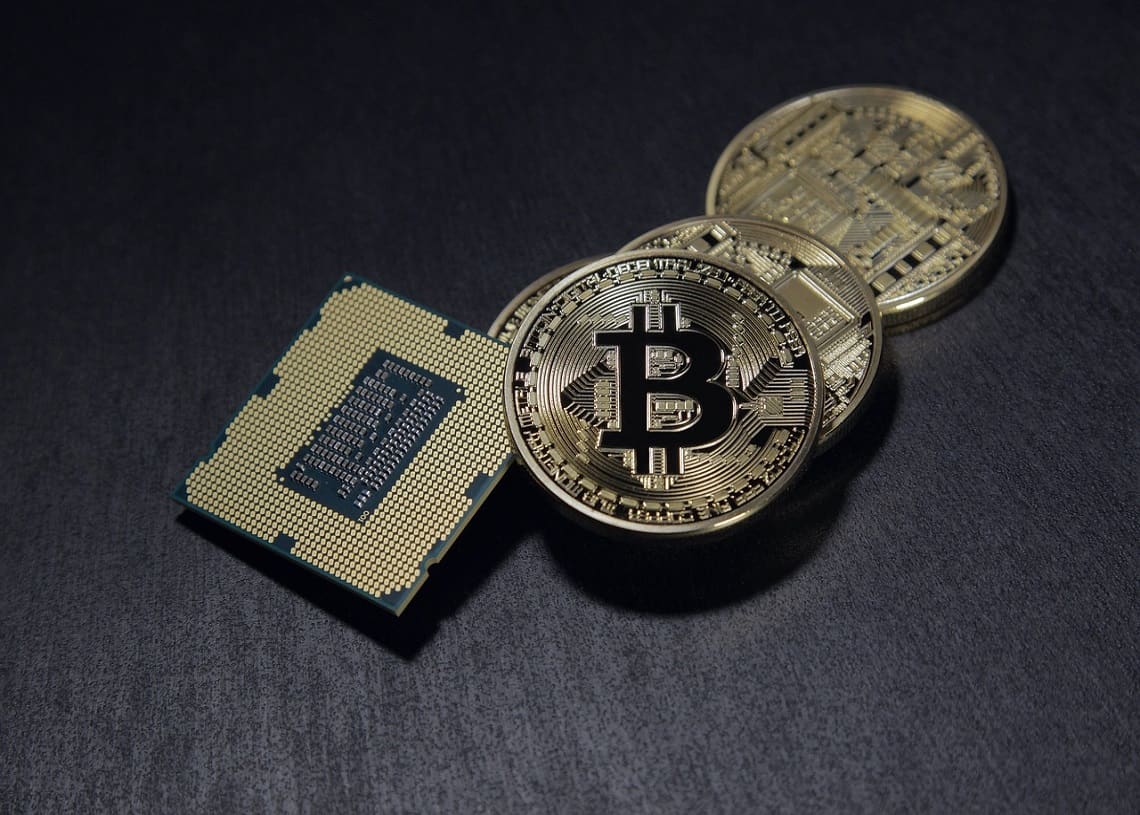What is Bitcoin halving?
The term Bitcoin halving is simply the process of reducing a miner’s reward by half, thereby ensuring a scarcity of Bitcoin supply. It simply means ‘halving’ a miner’s rewards. The supply of Bitcoin is limited to 21 million Bitcoins mined and once the supply reaches this value, the network will stop the further production of new Bitcoins. As it is with gold, sooner or later, Bitcoin will be completely mined and there will be no more left, hence, it is often referred to as the ‘digital gold’
It takes an approximately 4-year interval for Bitcoin halving to happen. In more simplified terms, the ‘halving’ occurs following every 210,000 blocks of Bitcoin mined. When the Bitcoin halving process has successfully taken place, mining becomes more difficult and this results in the reward for mining being cut in half. Since Bitcoin was invented in 2009 by the mysterious Satoshi Nakamoto, the halving event has occurred three times. While the resultant effects of the most recent halving are still yet to be seen, there are hopes that the process gives a big surge to BTC in the positive direction.
Also Read:
• How To Sell Bitcoin?
• Should You Buy Bitcoin?
• What Is Bitcoin Arbitrage And How To Take Advantage Of It?
• Bitcoin Fees: Important Facts To Know
What is Bitcoin mining?
Bitcoin mining is referred to as the process where people digitally add records of transactions to Bitcoin’s blockchain network. Here, people participate either as a transaction validator or processor. The blockchain network is a publicly allocated ledger that contains the history of every transaction done in Bitcoin. The mechanism of mining is basically about a record-keeping process that is being carried out with a high amount of computing power.
Bitcoin employs a system referred to as Proof of Work (PoW) which implies miners have to put forward proof of their work input in processing transactions before any reward for mining can be released to them. The time and energy expended in running the computer hardware and computing complex equations are considered the work input made by each miner. The Bitcoin network is currently processing just under four transactions per second as of August 2020, with transactions being logged in the blockchain every 10 minutes.
When mining first started, Bitcoin miners are given a block reward of 50 bitcoins per block. By late 2020, a total of three halving events have occurred and the reward given to miners now stands at 6.25 BTC per block. This is how a new BTC is created. The third and most recent halving occurred in May of 2020. It quickly became a catalyst of the recent surge to just under $50,000.
How does a Bitcoin halving work?
When Bitcoin halving happens, the rate at which new coins are produced is reduced and this, in turn, leads to a lower supply of available Bitcoin. This halving event is further simplified in this process where the reward released to Bitcoin miners is first halved, thus the inflation is also cut in half. This in turn leads to a reduction in available supply and a higher demand for the coin. With the increased demand, the price of Bitcoin also gets high, which then means the incentives to miners remain. This is irrespective of the smaller rewards from the halving, as the Bitcoin value is increased in the halving process.
These halvings have a way of affecting investors because other low supply commodities like gold, can experience high demand and their prices are pushed higher, following the law of supply and demand.
Why is Bitcoin halving significant?
Bitcoin halvings are very significant since they directly affect the price of Bitcoin and are definitive in determining how many coins will be in circulation. The constant supply of new Bitcoin as well as the demand and increasing supply in successive 4 years intervals create a predictable economic pattern with a self-driven rate of inflation.
In the early stages of the network, Bitcoin miners are rewarded more heavily by the block subsidy than transaction fees. With the Bitcoin network’s disinflationary monetary policy, approximately every 4 years the block subsidy drops by 50%.
Based on recent happenings and how Bitcoin halvings have ensued over the years, the halving events have pushed up the value of Bitcoin. Although this Bitcoin halving has taken place only three times yet, it remains uncertain how this year’s halving is going to pan out or affect other digital currencies. Almost a year had passed before the cryptocurrency was able to adequately regulate the effects of halving block rewards from the two BTC halving events that occurred before the most recent one.
How many Bitcoin halvings have occurred?
There have only been three Bitcoin halvings. The first halving happened on November 28, 2012, and the 2nd halving happened on July 9, 2016. The most recent halving happened on May 11, 2020, and saw Bitcoin’s price stay at a little below $9,000 after the event. However, Bitcoin’s price rose to around $18,000 as of November 2020. The next Bitcoin halving is estimated to happen in the spring of 2024.
What happened the last time Bitcoin halved?
The last time Bitcoin halved was the third halving and occurred on May 11, 2020, when the COVID-19 pandemic hit the hardest. This Bitcoin halving gave a block reward of 6.25 BTC per block. Although the cryptocurrency market and traders experienced high tension and anticipation, the event took place with no issues.
When is the next Bitcoin halving?
The next halving date isn’t exactly clear yet. However, since the event takes roughly every four years interval, the next halving has been estimated to happen in 2024 at block 840,000. By 2041, the final Bitcoin is expected to have been mined at which time there wouldn’t be any supply of new BTC.
Will the Bitcoin price change?
Of course, the price of Bitcoin will change as a result of halving. It’s the major noticeable effect that has been specifically observed from previous halvings There are 21 million Bitcoins in total max supply in circulation. As it stands, it now costs $12,525 to mine just a single BTC. Mining new Bitcoins at any price below this price point is relatively unprofitable and this has forced most miners to quit mining new coins.
Following the sell-off that occurred on March 12, which had the BTC price spin downward to almost half its value, the coin has successfully been able to return as high as 90% as per price.
In recent times, the effect of Bitcoin’s halving hasn’t always been experienced right away. Following the first halving that occurred on November 28, 2012, the price of Bitcoin stood around $12. However, after a year, its price rose by 8,500% to about $1,032. This also comes as one of the very rare instances where bitcoin’s price movement tends to the positives in response to its volatility.
Also, Bitcoin’s price in 2016 stood around $650 when it went through its 2nd Bitcoin halving event. After one and a half years, its price climbed up to its 2019 all-time high at $20,000 or more particularly supported by institutional investors.
After the third halving which occurred on May 11, 2020, (its third halving), Bitcoin price was just a little below $9,000. As of March 2021, Bitcoin had crossed $60,000 – a massive surge. The fact that the most recent halving occurred in May 2020 and the price rise of BTC is not due to halving of the mining reward but most probably, the fear of missing out by investors.
As Bitcoins are mined, blocks of verified transactions have to be “hashed” before being added to the ever-growing chain of blocks, aka the blockchain. The higher the hash power of the network, the greater the number of miners would be needed to commit a 51 percent attack. The hash rate is measured in trillions, quadrillions, and even quintillions of hashes per second. Put simply, hash rate is a general measure of the processing power of the Bitcoin network.
GPU mining ended in early 2013 for Bitcoin. You should only mine BTC if you do at least 100 hours of research as mining is very professional and one needs to understand the difficulty. Avoid cloud mining (most are Ponzis, fractionally reserve mine, or charge too high fees = you will never get ROI). In some jurisdictions cloud mining is considered illegal and lacks security as well. Use an accurate calculator and set at least a 4% difficulty increment or higher and only use modern ASICs. Those are quite a lot to consider.
Not following these guidelines means you will almost be guaranteed to lose money. There is no central bank to which you can complain when anything goes wrong with your cryptocurrency transactions, unlike fiat currency.
Key Takeaways
- The term ‘bitcoin halving’ happens when the reward a Bitcoin miner receives for mining Bitcoin transactions is reduced by half.
- It takes an estimated time of 4 years for bitcoin halving to occur after the previous one. So far, there have only been a total number of three halving events.
- This bitcoin halving also reduces by 50 percent the inflation rate of Bitcoin and the speed at which new Bitcoin(s) are created into circulation per time.
- The two most recent halvings have been followed by massive burst cycles and booms that have culminated in prices higher than before the halving event.
- The last bitcoin halving occurred on May 11, 2020, leading to a block reward of 6.25 Bitcoins. There was a late price rise effect and what this could mean is still a puzzling fact for now.
FAQs on Bitcoin Halvings
When have the Bitcoin halvings occurred?
Bitcoin halving has so far occurred at three different times since its creation. The first halving occurred on November 28, 2012, and the second halving happened on July 9, 2016. The third halving which is the most recent one happened on May 11, 2020.
What’s the function of the Bitcoin protocol
The Bitcoin protocol is based on collaboratively maintaining the Bitcoin ledger. The digital cash is transferred through transactions that are confirmed only after validation of key criteria and joint consensus by participating nodes through a mathematical puzzle-based voting process.
Does halving have any effect on Bitcoin’s price?
As explained in the early paragraphs, the most significant effect of halving is on bitcoin’s value. It increases the value of bitcoin in the long term. After the first bitcoin block halving took place in 2012, the price moved up from $11 to $12. One year later, its price surged to $1,032. This implies an increase of more than 8,500% in price value. But did you know one person caused that spike in 2013?
Since halving occurs after every 210,000 blocks of BTC mined, or after every four years, Bitcoin had another price value increase in 2016 from $576 to $650. This happened around that time where an increasing number of buyers have begun to hold BTC as they await the halving. In June 2017 – one year after the second halving, the price of BTC rose to its ATH record of $2,526, which is around a 288% increase in price value.
There are 21 million Bitcoins in total max supply in circulation. Although an increase in valuation occurred following the halving in 2016, it wasn’t much to reckon with as compared to the halving that took place in 2012. According to cryptocurrency experts, it was argued that this insignificant price action was because the whole Bitcoin community was anticipating the event, so any hike in valuation had already been considered.
What happens when there are no more Bitcoins left in a block
The Bitcoin halving system is estimated to cease by the year 2140 at which time the final Bitcoin block reward would have been released and miners will now earn their rewards from fees generated from processing transactions. Also, at that time, the last of all Bitcoins totaling 24 million will have been mined. Thus, it makes sense that the halving event will stop since there will be no more new BTC left to be discovered or mined. As miners will be incentivized after the final halving by processing (confirming and validating) transactions on the blockchain, this will help to keep the network running as it is expected that the transaction fees rewarded to miners will rise in the future. In essence, the idea behind this is that competition for these transaction-based rewards (fees) will force miners to remain low after the cease in halving.
Conclusion
Bitcoin prices are primarily affected by its supply, the market’s demand for it, availability, and competing cryptocurrencies. As of December 2020, approximately 88.5% of the total Bitcoin supply had been mined. The trading volume and price increase are directly proportional to the market’s demand. Block reward halving tightens supply and some argue will lead to a bullish market and an increase in the price of bitcoin.
We can say from Bitcoin’s history, that the latest halving has affected the Bitcoin market in a positive way but deflated the value of traditional fiat currencies in cryptocurrency exchanges. Meanwhile, the reduction of revenue for miners may squeeze out miners who are least efficient, and therefore the computing power connected to the Bitcoin network may fall significantly.
Rewards to Bitcoin miners keep halving until they reach zero. Bitcoin bulls say that this scarcity is part of what underpins the cryptocurrency’s value and makes it a potential “hedge” against currencies that are vulnerable to devaluation in times of economic crisis. Bitcoin algorithm might seem foreign and complicated in the beginning but understanding Bitcoin halving concepts, might not be hard but logical, after all.





